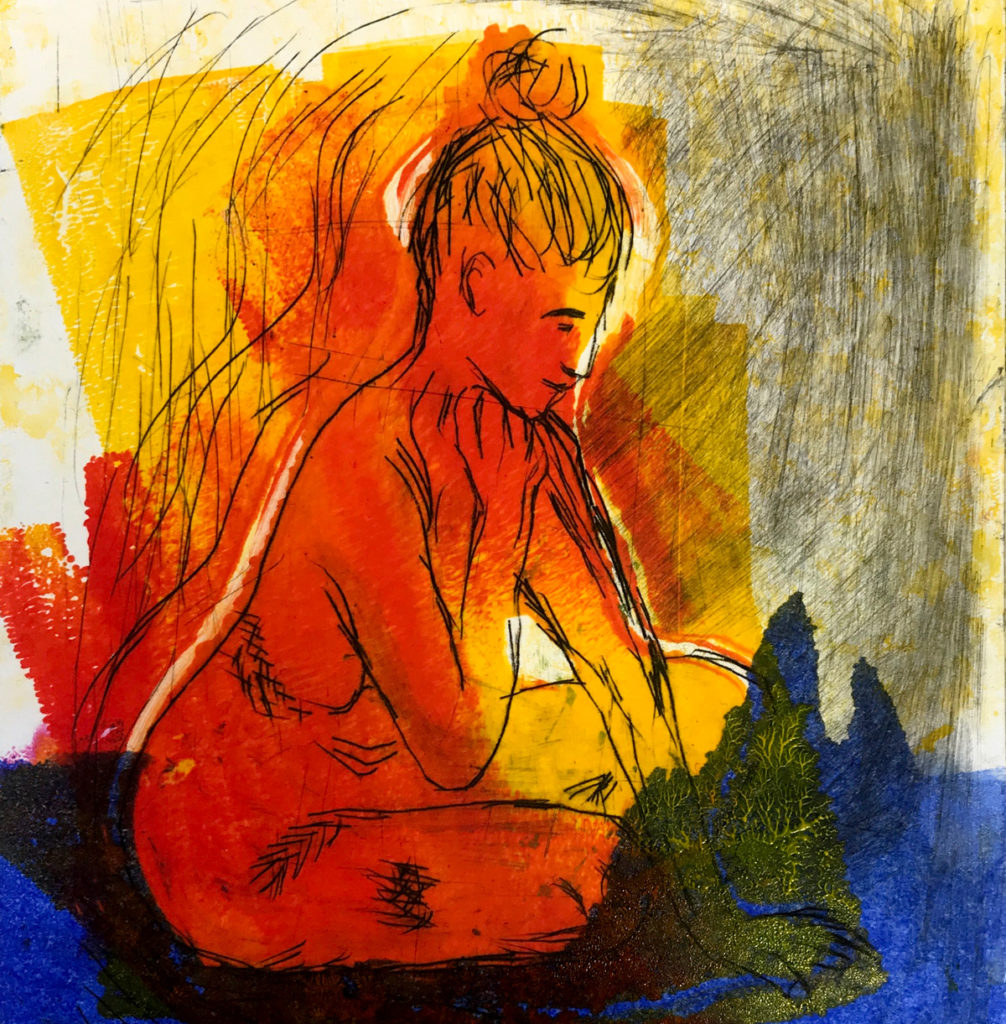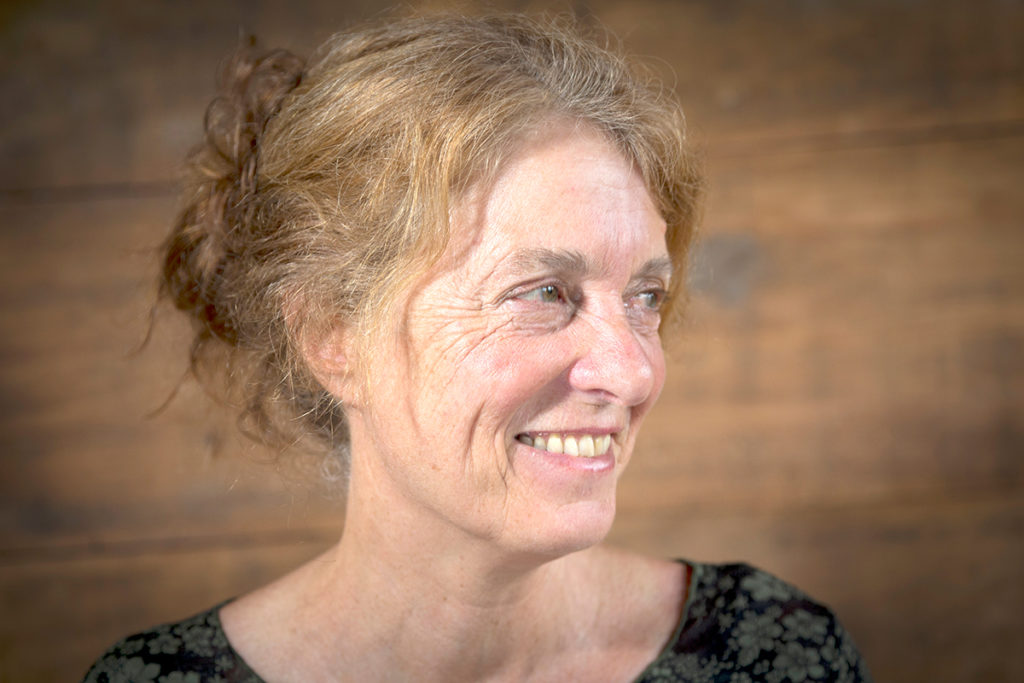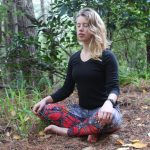
by Dyana Wells
In the modern world, there is a tendency for us to live exclusively through our conceptual minds. We live in bubble worlds of thoughts and emotions, rather than in the world of direct experience.
The body, however, experiences itself and the world directly. It is shaped – moment to moment – by its direct interaction with life.
The conceptual mind sees the world through the filter of its own beliefs and expectations. It experiences a second-hand world that tends to play back all the prejudices and preferences developed during a lifetime.
If life has become empty and repetitive, and if it seems banal and meaningless, this is because we have lost the ability to experience the ever-changing miraculous flow directly.
Life itself is like a never-ending Aladdin’s cave, offering infinite possibilities of experience. This is one reason meditating with the body is important. It brings us back to the numinous richness of direct experience.
The conceptual mind disconnects us from other people. It creates clear boundaries that can isolate us from life, from ourselves, from our families and friends. Life can start to become something we experience at arm’s length, out there – on the outside of the bubble I live is, all alone, by myself.
The conceptual mind defines us as a separate autonomous entity, a self existing in time. There may be good reasons for this, but we need to beware of the dangers. The conceptual mind creates the ego, the myriad thoughts we have about who we are. Without thinking about it we can fall into becoming defined by these thoughts until we believe we are nothing more than them.
Thoughts are just thoughts, nothing much at all. To be defined by the thoughts we have about who we are is a shaky place to be. Thoughts have no reality – they change, they aren’t stable, they tend to depend on others to verify them. They can pop just like that.
By contrast, the world of direct experience is all connected up. What we experience directly through the senses, we are connected to. We discover that we have never been separate from the world we experience.
Through direct experience, our world becomes whole again and we are healed.
Through meditating with the body our sensing of the world outside opens out again, but significantly our inner sensing also opens up. We rediscover what is it to feel.
Many of us no longer inhabit our bodies. We can see them, we can move them, we are prodded by discomfort, we indulge in activities and substances to create strong sensations of pleasure and exhilaration, but we no longer have any kind of intimate, feeling relationship with our bodies. We are no longer embodied. The conceptual mind evolved to serve the body, but we no longer believe this. Many of us would rather not have to be bothered about a body at all.
And yet this body is the source of the treasures of life. If art and music, and the beauty of nature, and our relationships are quintessential, this is only because of their ability to conjure up sublime feelings in us. The home of feelings is the body.
Feeling is not a thought – it is a direct body experience. If we investigate closely it is clear how much we actually value feeling. What gives life meaning or value has to do with how it makes us feel. When we are bereft of meaning and value it often has to do with no longer feeling, or not wanting to feel anything at all.
Our body, through feeling, is evaluating every experience in life we have, whether the experience is conscious or not. Our bodies are much more intimately engaged with the world around us than we could possibly imagine. The wisdom of the body refers to the depth of experience in the body, including that coded into our genes through millions of years of evolving on earth.
This wisdom is available to us, and the language we use to uncover this wisdom is feeling. The body is the best instrument we have to negotiate life. But we don’t. Why might this be?
I think there are two major reasons why we are so disconnected from our feeling bodies.
One is to do with social pressure and the other is to do with the way we process pain.
Society seems to value thinking rather than feeling. The major focus in our schools is mental. We learn to read and write and think conceptually. We train our conceptual minds in the classroom, and on the sports field we train our bodies but we don’t spend time valuing and refining our feelings. Both art and music are usually secondary disciplines.
Because feelings have no place in the classroom and possibility not at home either, the child learns to dismiss them. In doing this a core part of ourselves is dismissed. We shut out feelings by tensing the body, we lock them away in a small dark room, a place no-one can get at. Some part of us, though, still knows they are important.
Humans don’t appear to process pain and trauma very well. Unlike animals which shake out excess energy resulting from a difficult or painful event, human seem to lock the pain up in the body. Maybe we are scared of the energy or scared of the social reactions. The body then tenses around the pain so it can’t be felt. We are protected from feeling the pain.
Tension is our way of not feeling. Some writers have suggested that the ego is the result of traumatic events in childhood. It is the way we freeze and tense up to resist what is uncomfortable and unacceptable. It is the strategy we adopt to deal with what would be too painful to experience fully as a child. The tensions in our body are the resistant patterning of our ego.
The problem is that when we freeze our ability to feel pain we have also frozen our ability to feel pleasure or very much at all.
Life is difficult and a general tendency for us all over time is to contract, to freeze. We freeze at what we are helpless to change – a loud noise, a disgusting smell, an uncomfortable meeting, an irritating child. We can observe this in both our minds and our bodies.
It is not inevitable.
The starting point for somatic meditation is working with tension.
We learn to recognise the tension, the frozen parts in us, and to release them. Somatic meditation is about letting go, softening, relaxing. Usually, we have no idea how frozen bodies are until we investigate. When we relax the grip of the mind on the body, the body naturally begins to soften and experience the world and feel itself. We start to come back to life.
Tension is a sympathetic nervous system response, it keeps the body ready for fight or flight. Blood pressure rises, glucose levels in the blood increase and the circulation is shunted from non-essential organ systems like the digestive and reproductive systems. Stress underlies many major diseases in the modern world.
Somatic meditation stimulates the parasympathetic nervous system in several ways. An internal focus on feeling, and on the sensations in the body, is a major signal that there is no threat. When the focus is on feeling, mental activity, which can often be destructive, also quietens down.
Consciously relaxing muscles, slowing the breath down, lying on our backs on the ground, and quietening the mind also all signals to the organism that it is safe and can relax. The activity of the sympathetic nervous system down-regulates.
When the activity of the parasympathetic nervous system becomes dominant the body can start healing. As the mind becomes quieter and finer we can also directly contact the healing energy of the body, amplify it with our awareness and move it around the body. We can participate in the healing journey. Beautiful healing energies of bliss may also arise.
Our body becomes a friend, a place of pleasure and warmth, a home for us.
Qualities of love, happiness, joy, belonging, simple warmth and connection are all felt in the body.
These feelings are natural to us, they bubble up spontaneously. The body just needs to soften and the mind just needs to let go of its hold. Peace and beauty and power are there with us right now.
It is the body that trusts life. The mind may not but the body does. It is inextricably complex in its activity, it is inextricably woven into the fabric of the whole life. It could not possibly be otherwise. It is in constant communication with itself and life around it, changing and being changed. It is not possible for it not to trust life. It is the process of life itself. It is part of the whole. When we tap into this wellspring of life we just trust the unfolding of life through us. When we lose it we are alone and uncertain.
Somatic meditation leads us back to this place of trust because it takes us back behind the querulous mind to the body.
In summary, although I’m sure there are many more benefits of somatic meditation, we are:
- Training the mind to display its beautiful qualities
- Learning to focus, to concentrate and investigate, to discriminate in an increasingly fine deep way
- Training the mind to recognise its own open empty nature
- Training the mind to be present, equanimous and kind.
All of these qualities enrich our daily lives.
About Dyana Wells

Dyana has been a lifelong student of many disciplines. She has a BSc majoring in Botany and Zoology, MA (Hons) in Philosophy, MCW (Hons) in Creative Writing, Dip Yoga Therapy from Wellpark College, a Cert Counselling and most recently a Cert Art and Creativity.
Dyana has been teaching for much of her life. She developed the 200 and 300 hour Yoga Teachers Training Program at Kawai Purapura where she taught Yoga Philosophy, Meditation, Somatics and Anatomy & Physiology. She continued teaching with the Contemporary Yoga Teachers Training school in Remuera.
Dyana also taught Chemistry and Anatomy & Physiology to Naturopathic and Massage students at Wellpark College of Natural Therapies.
Her infectious curiosity about all aspects of living and the relationships between them is the gift she brings to her teaching.


Fine way of telling, and pleasant post. Nice info! Thanks a lot for sharing it, that’s truly has added a lot to our knowledge about this topic. Have a more successful day. Amazing write-up, always find something interesting.
Thanks